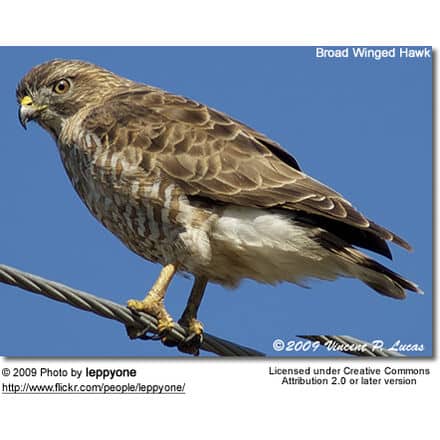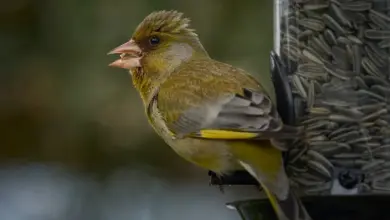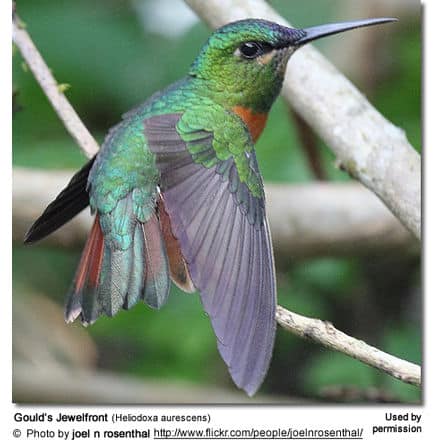Amethyst-throated Hummingbirds
The Amethyst-throated Hummingbirds (Lampornis amethystinus) – also known as Amethyst-throated Mountaingem or Cazique Hummingbird – occurs naturally in Central America, specifically El Salvador, Guatemala, Honduras and Mexico. They are potential vagrants to southern Texas in the USA.
They inhabit subtropical or tropical moist montanes.
Subspecies and Ranges:
- Lampornis amethystinus amethystinus (Swainson, 1827) – Nominate Race
- Range: Western, central and eastern Mexico (south Nayarit, south Nuevo León and southern Tamaulipas to Veracruz and eastern Oaxaca)
- Margaret’s/Violet-throated Hummingbird – Lampornis [amethystinus] margaritae (Salvin and Godman, 1889)
- Range: Southwestern Mexico (Michoacan, state of Guerrero, western Oaxaca)
- Lampornis amethystinus circumventris (Phillips, 1966)
- Range: Southern Mexico (San Gabriel Mixtepec, in southwestern Oaxaca).
- Lampornis amethystinus salvini (Ridgway, 1908)
- Range: Highlands of southern Mexico (Chiapas), Guatemala and El Salvador.
- Lampornis amethystinus nobilis (Griscom, 1932)
- Range: Highlands of Honduras
- [Longuemare’s Sunangel (Heliangelus [amethysticollis] clarisse – Longuemare, 1841)] – South American hummingbirds that are closely related to, or by some authorities even considered a subspecies of, the Central American Amethyst-throated Hummingbird (Heliangelus amethysticollis).
Description
The Amethyst-throated Hummingbird measures 4.5 – 5 inches (11.5 – 12.5 cm) in length.
Adult male: His upper plumage is glossy green. The plumage below is dark grey with a bright purple throat patch (gorget). The outer tail feathers are grey tipped blended into the black of the tail. The immature male looks similar to the adult female, but he has less distinct grey tips on his outer tail feathers.
Adult Female: She has a glossy green upper plumage. The plumage is medium grey below. Her throat is strongly tawny tinted. The grey tips on the outer tail feathers are crisply defined. The immature female has pale edgings on the feathers of the upper plumage.
Similar Species: Resemble the Blue-throated Hummingbird, but have a black tail narrowly tipped with grey.
Diet / Feeding
The Amethyst-throated Hummingbirds primarily feed on nectar taken from a variety of brightly colored, scented small flowers of trees, herbs, shrubs and epiphytes. They favor flowers with the highest sugar content (often red-colored and tubular-shaped) and seek out, and aggressively protect, those areas containing flowers with high energy nectar. They use their long, extendible, straw-like tongues to retrieve the nectar while hovering with their tails cocked upward as they are licking at the nectar up to 13 times per second. Sometimes they may be seen hanging on the flower while feeding.
Many native and cultivated plants on whose flowers these birds feed heavily rely on them for pollination. The mostly tubular-shaped flowers actually exclude most bees and butterflies from feeding on them and, subsequently, from pollinating the plants.
They also visit local hummingbird feeders for some sugar water, or drink out of bird baths or water fountains where they will either hover and sip water as it runs over the edge; or they will perch on the edge and drink – like all the other birds; however, they only remain still for a short moment.
They also take some small spiders and insects – important sources of protein, particularly needed during the breeding season. Insects are often caught in flight (hawking); snatched off leaves or branches, or are taken from spider webs. A nesting female can capture up to 2,000 insects a day.
Males establish feeding territories, where they aggressively chase away other males as well as large insects – such as bumblebees and hawk moths – that want to feed in their territory. They use aerial flights and intimidating displays to defend their territories.
Breeding / Nesting
Hummingbirds are solitary in all aspects of life other than breeding; and the male’s only involvement in the reproductive process is the actual mating with the female. They neither live nor migrate in flocks; and there is no pair bond for this species.
The average clutch consists of two white eggs, which she incubates alone, while the male defends his territory and the flowers he feeds on. The young are born blind, immobile and without any down.
The female alone protects and feeds the chicks with regurgitated food (mostly partially-digested insects since nectar is an insufficient source of protein for the growing chicks). The female pushes the food down the chicks’ throats with her long bill directly into their stomachs.
As is the case with other hummingbird species, the chicks are brooded only the first week or two, and left alone even on cooler nights after about 12 days – probably due to the small nest size. The chicks leave the nest when they are about 7 – 10 days old.
Calls / Vocalizations / Sounds
Their calls are described as sharp, hard chips and buzzy trills. The male’s song is similar to the “peep” song of the Blue-throated Hummingbird.
Alternate (Global) Names
French: Colibri à gorge améthyste German: Rotkehlnymphe Spanish: Colibrí Amatistino
Other common names: Cazique Hummingbird; Spanish: Colibrí Amatistino; French: Colibri à gorge améthyste; German: Rotkehlnymphe; Italian: Colibrì gola ametista; Czech: kolib?ík ametystohrdlý; Danish: Ametyststrubet Bjergjuvel; Finnish: nokipilvikolibri; Japanese: nodomurasakishiromejirihachidori; Dutch: Groene Juweelkolibrie; Norwegian: Amestyststrupejuvel; Polish: malachicik ametystowy; Slovak: medovec ametystový; Swedish: Ametiststrupig bergsjuvel
Hummingbird Resources
- Hummingbird Information
- Hummingbird Amazing Facts
- Attracting Hummingbirds to Your Garden
- Hummingbird Species
- Feeding Hummingbirds





